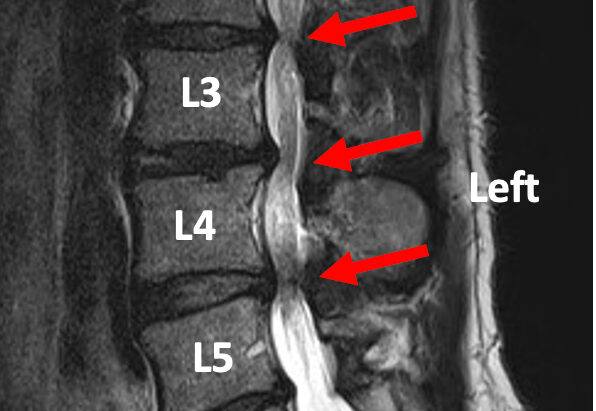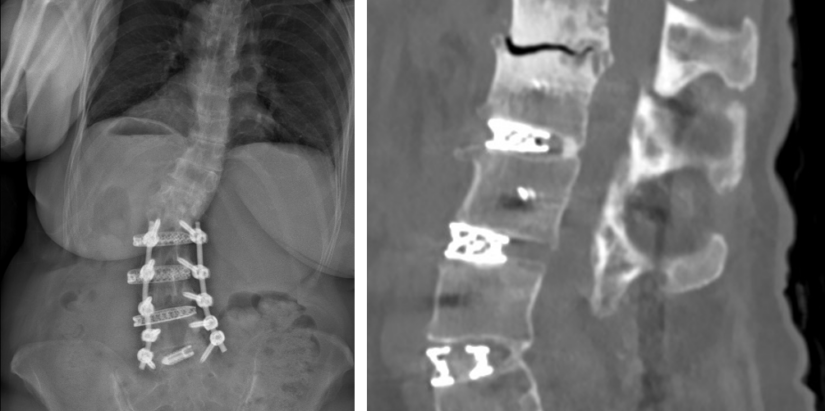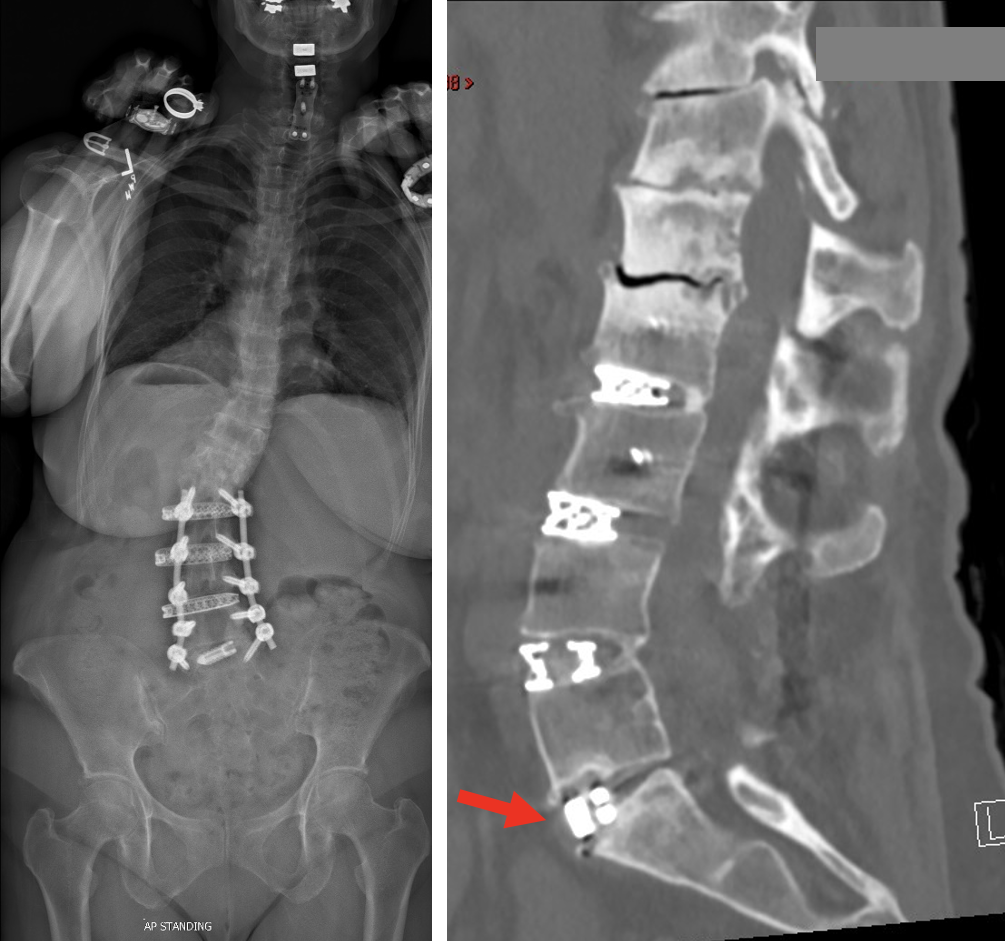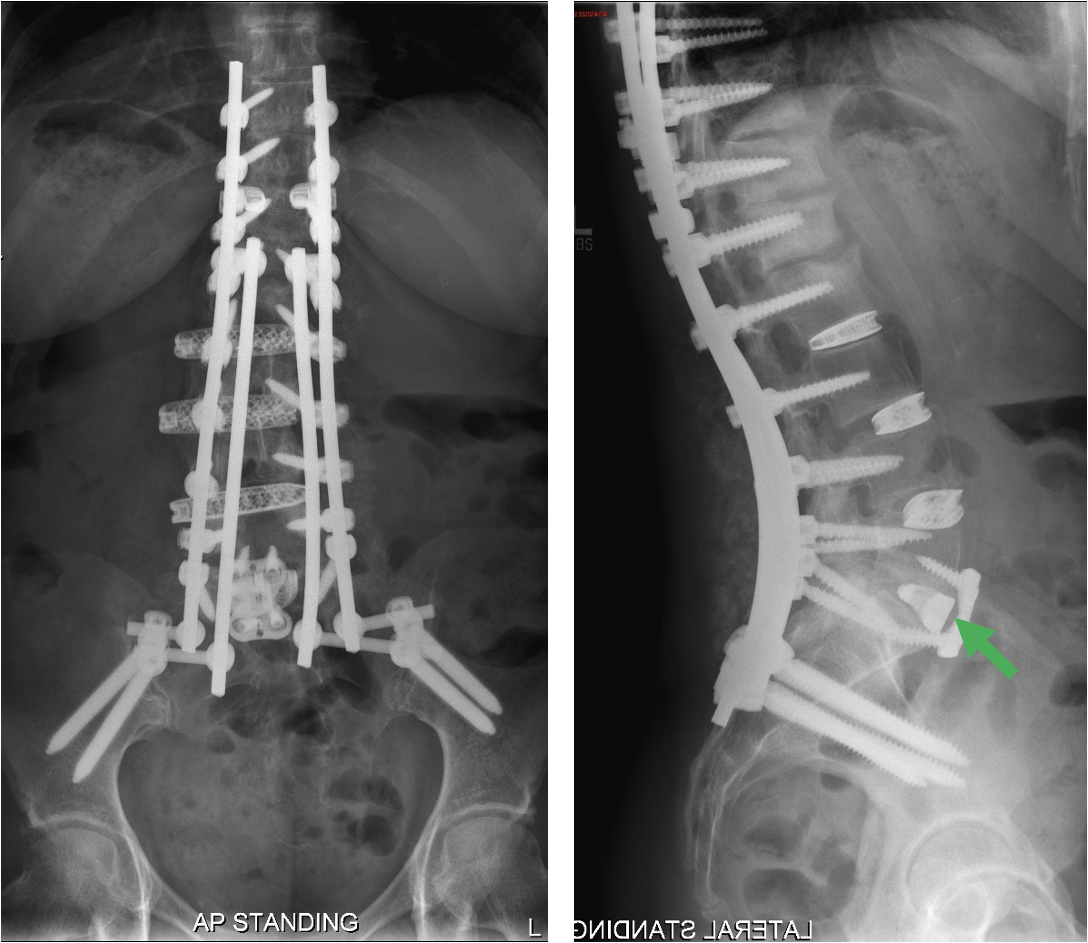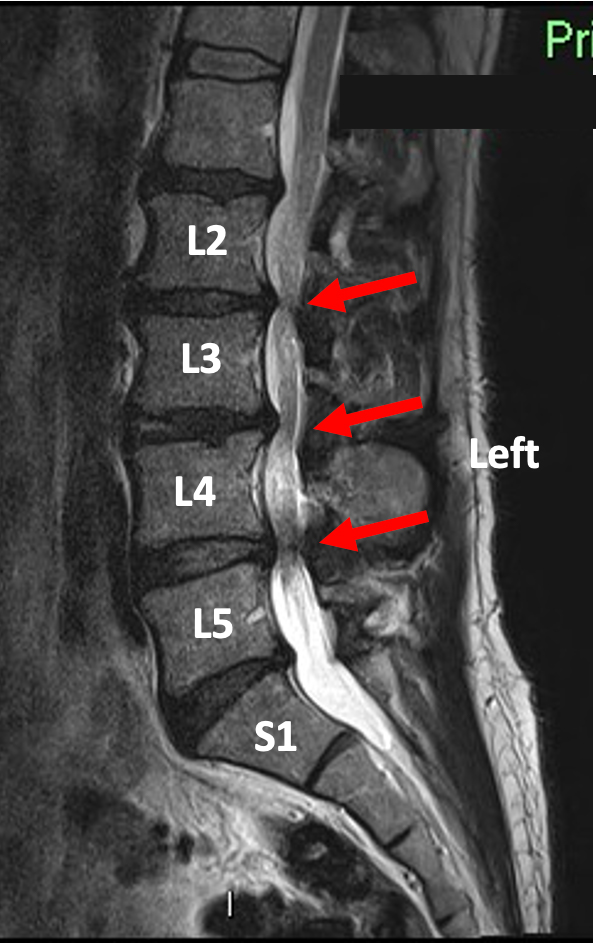

Axial images (cross-sections) of lumbar MRI showing stenosis (narrowing) at L2-3, L3-4, and L4-5 (red arrows). L5-S1 with no significant stenosis (green arrow) shown for reference. Blue arrows point to the lamina to be removed as part of laminectomy procedure.
What is a laminectomy?
Laminectomy refers to removal of the lamina of the vertebral bones to provide space for the nerves or spinal cord. The lamina is the bony covering of the spinal canal in the back of the spine. The term “ectomy” simply means removal. Thus, a laminectomy is removal of the lamina. This procedure is often performed to relieve the symptoms resulting from a narrowed spinal canal known as spinal stenosis.
What is spinal stenosis and how can a laminectomy help?
Degeneration of the facet joints and intervertebral discs and thickening of the ligaments (ligament hypertrophy) can result in narrowing of the spinal canal, known as spinal stenosis. The arthritic facets (joints between the vertebrae) become bulkier and consume the space available for nerve roots. Bony outgrowths called bone spurs can also narrow the spinal canal. Spinal stenosis can cause symptoms such as pain, tingling, numbness or weakness that extends to the extremities, and bowel or bladder impairment.
The spinal canal is a bony ring, and the goal of laminectomy is to relieve the pressure on the spinal nerves or spinal cord by removing the back portion (lamina) of this ring and opening (decompressing) the spinal canal. Depending on the location(s) of narrowing, this procedure may be an option in the cervical spine (neck), thoracic spine (chest area), or lumbar spine (lower back area). Depending on your condition, surgery may be an option if non-surgical treatments fail to relieve the symptoms after a reasonable amount of time.
How is a laminectomy performed?
You’ll be resting on your stomach and put under general anesthesia. One you’re asleep, your surgeon will make an incision near the center of the back and approach the vertebrae by carefully moving the soft tissues and muscles away. Then, the total lamina or part of it is removed to relieve the compression. If other compression sources such as bone spurs and/or disc fragments are present, those can be removed as well. The surgeon then brings the soft tissues and muscles back in to position and closes the incision.
In some cases, spinal fusion may also be done along with the laminectomy by placing bone graft or appropriate substitute between two affected vertebrae to allow bone growth between them. The bone graft acts as a medium for binding the two vertebral bones to help provide stability to the spine if needed. If you want to learn more about the spinal fusion procedure then please refer to the section on spinal fusion.
What does post-op recovery look like?
After the surgery, you may notice early improvement of symptoms. Sometimes, symptoms improve more gradually. Often these procedures involve a hospital stay. Physical therapy may be prescribed once you have had a sufficient chance to recover. Your return to work and daily activities depends on how fast your body heals and the type of activities you aim to resume.
What are the risks or complications of Laminectomy?
All surgeries carry risk and the laminectomy is no exception. In addition to the anesthetic complications, spinal surgery is associated risks such as:
- Infection
- Blood loss
- Blood clots
- Nerve/spinal cord damage
- Durotomy (opening of the spinal fluid sac)
- Spinal instability that may require an additional surgery
- And bowel and bladder problems
Failure to fuse the vertebral bones with the bone graft may also occur if a fusion is performed and could require an additional surgery.
Before going through with any surgical procedure, educate yourself and make an informed decision! Talk to your physician for a complete list of indications, clinical results, adverse effects, warnings and precautions, and other relevant information about the cervical laminectomy procedure.
If you have any questions, comments, or concerns, please talk to your surgeon or contact us for more information.
Book an Appointment
Contact Information
Address: 415 Ray C Hunt Dr, Charlottesville, VA 22908
Phone: (434)-243-6339
Hours:
Monday: 8AM–5PM
Tuesday: 8AM–5PM
Wednesday: 8AM–5PM
Thursday: 8AM–5PM
Friday: 8AM–5PM
Saturday: Closed
Sunday: Closed


